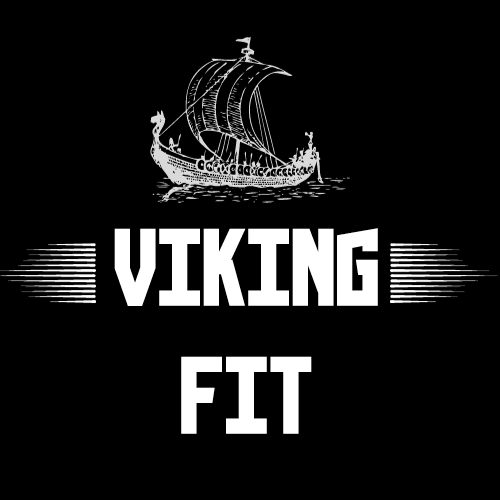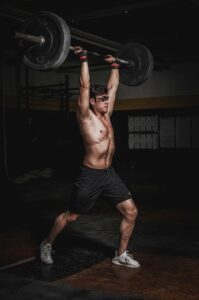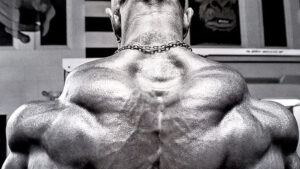The Ultimate Guide to Compound Leg Exercises: Transform Your Lower Body Workouts
Table of Contents
When it comes to building strength and muscle in your lower body, compound leg exercises are essential. These powerful movements engage multiple muscle groups simultaneously, leading to greater efficiency and effectiveness in your workouts. In this comprehensive guide, we’ll explore the best compound leg exercises, their benefits, how to incorporate them into your fitness routine, and additional tips to help you achieve impressive results
What Are Compound Leg Exercises?
Compound leg exercises involve movements that engage multiple joints and muscle groups at the same time. Unlike isolation exercises, which target a single muscle, compound movements work several muscles, leading to improved functional strength, balance, and coordination. These exercises are the cornerstone of any effective lower body workout because they maximize muscle engagement and caloric expenditure.

Benefits of Compound Leg Exercises
- Increased Muscle Activation
- Efficient Muscle Engagement: By engaging multiple muscle groups, compound exercises promote greater overall muscle activation, leading to more significant muscle growth. For example, a squat activates the quadriceps, hamstrings, glutes, and calves, providing a comprehensive workout in a single movement.
- Improved Neuromuscular Coordination: Performing compound exercises enhances neuromuscular coordination by training the muscles to work together efficiently. This coordination is crucial for both athletic performance and everyday activities.
- Enhanced Functional Strength
- Mimics Real-Life Movements: These exercises mimic real-life movements, improving your ability to perform daily activities with ease. Movements such as bending, lifting, and walking become more efficient and safer as your functional strength improves.
- Reduces Injury Risk: Strengthening multiple muscle groups simultaneously helps to stabilize joints and improve overall body mechanics, reducing the risk of injury during both exercise and daily activities.
- Efficient Workouts
- Time-Saving: Compound exercises maximize workout efficiency by working multiple muscles at once, reducing the need for numerous isolation exercises. This makes it easier to fit a full-body workout into a shorter period.
- Balanced Muscle Development: By incorporating compound exercises, you ensure balanced muscle development, which is essential for overall body strength and symmetry.
- Improved Calorie Burn
- Increased Metabolic Rate: Engaging large muscle groups increases your metabolic rate, helping you burn more calories during and after your workout. This makes compound exercises an excellent choice for those looking to lose weight or maintain a healthy body composition.
- Enhanced Cardiovascular Health: Many compound leg exercises, such as squats and lunges, can elevate your heart rate, providing cardiovascular benefits in addition to strength gains.
Top Compound Leg Exercises
- Squats
- Muscles Worked: Quadriceps, hamstrings, glutes, calves, lower back.
- How to Perform: Stand with feet shoulder-width apart. Lower your body by bending your knees and hips, keeping your chest up and back straight. Return to the starting position.
- Variations: Back squat, front squat, goblet squat, sumo squat, overhead squat.

- Deadlifts
- Muscles Worked: Hamstrings, glutes, lower back, core.
- How to Perform: Stand with feet hip-width apart, holding a barbell in front of your thighs. Hinge at the hips, lowering the barbell while keeping your back straight. Return to the starting position.
- Variations: Conventional deadlift, sumo deadlift, Romanian deadlift, single-leg deadlift.

- Lunges
- Muscles Worked: Quadriceps, hamstrings, glutes, calves.
- How to Perform: Step forward with one leg and lower your hips until both knees are bent at 90 degrees. Push back to the starting position and switch legs.
- Variations: Walking lunges, reverse lunges, lateral lunges, curtsy lunges, Bulgarian split squats.
- Leg Press
- Muscles Worked: Quadriceps, hamstrings, glutes.
- How to Perform: Sit on a leg press machine with feet shoulder-width apart on the platform. Push the platform away by extending your legs, then return to the starting position.
- Variations: Single-leg press, narrow stance leg press, wide stance leg press.
- Bulgarian Split Squats
- Muscles Worked: Quadriceps, hamstrings, glutes.
- How to Perform: Stand in a lunge position with your rear foot elevated on a bench. Lower your body until your front thigh is parallel to the ground. Push back up to the starting position and switch legs.
- Benefits: Improves balance and unilateral strength, reduces muscle imbalances.
- Step-Ups
- Muscles Worked: Quadriceps, hamstrings, glutes.
- How to Perform: Stand in front of a bench or step. Step up with one foot, bringing the other foot to meet it. Step back down and switch legs.
- Variations: Weighted step-ups, lateral step-ups, alternating step-ups.
- Glute Bridges
- Muscles Worked: Glutes, hamstrings, lower back.
- How to Perform: Lie on your back with knees bent and feet flat on the ground. Lift your hips until your body forms a straight line from shoulders to knees. Lower back to the starting position.
- Variations: Single-leg glute bridges, barbell glute bridges, hip thrusts.
- Romanian Deadlifts
- Muscles Worked: Hamstrings, glutes, lower back.
- How to Perform: Stand with feet hip-width apart, holding a barbell. Hinge at the hips, lowering the barbell while keeping your legs slightly bent and back straight. Return to the starting position.
- Benefits: Focuses on the posterior chain, improving hamstring and glute strength.
- Sumo Deadlifts
- Muscles Worked: Quadriceps, hamstrings, glutes, lower back.
- How to Perform: Stand with a wide stance, feet turned slightly outward. Hold a barbell with hands inside your knees. Lower your hips and lift the barbell while keeping your back straight. Return to the starting position.
- Benefits: Reduces strain on the lower back, engages inner thighs.

- Kettlebell Swings
- Muscles Worked: Hamstrings, glutes, lower back, core.
- How to Perform: Stand with feet shoulder-width apart, holding a kettlebell with both hands. Swing the kettlebell between your legs by hinging at the hips, then thrust your hips forward to swing it up to shoulder height. Return to the starting position.
- Benefits: Improves explosive power and cardiovascular endurance.
Incorporating Compound Leg Exercises Into Your Routine
To maximize the benefits of compound leg exercises, consider the following tips:
- Warm Up Properly
- Dynamic Warm-Up: Before starting your workout, perform a dynamic warm-up to prepare your muscles and joints for intense activity. Include exercises such as leg swings, hip circles, and bodyweight squats.
- Specific Warm-Up Sets: Perform specific warm-up sets with lighter weights to prepare your muscles for the main workout. This helps prevent injuries and improves performance.
- Focus on Form
- Proper Technique: Proper form is crucial to prevent injuries and ensure maximum muscle activation. Keep your back straight, engage your core, and avoid letting your knees collapse inward during exercises.
- Use a Mirror: Use a mirror or record yourself to check your form. This can help you identify and correct any mistakes.
- Progress Gradually
- Start Light: Start with lighter weights and gradually increase the load as you become more comfortable with the exercises. This allows your muscles and joints to adapt to the increased stress.
- Progressive Overload: Gradually increase the weight, repetitions, or sets to continue challenging your muscles and promoting growth.
- Combine with Isolation Exercises
- Balanced Routine: While compound exercises are highly effective, incorporating some isolation exercises can help address specific muscle imbalances and weaknesses. For example, add leg extensions and leg curls to target the quadriceps and hamstrings individually.
- Variety: Including a mix of compound and isolation exercises keeps your workouts varied and interesting.
- Allow for Recovery
- Rest Days: Give your muscles time to recover by scheduling rest days or alternating workout intensity. Rest is crucial for muscle repair and growth.
- Active Recovery: Incorporate active recovery days with light activities such as walking, swimming, or yoga to promote blood flow and reduce muscle soreness.
- Nutrition and Hydration
- Balanced Diet: Fuel your workouts with a balanced diet rich in protein, carbohydrates, and healthy fats. Protein is essential for muscle repair, while carbohydrates provide energy for intense workouts.
- Stay Hydrated: Proper hydration is crucial for optimal performance and recovery. Drink water before, during, and after your workouts.
- Consistency and Patience
- Regular Workouts: Consistency is key to seeing results. Stick to your workout routine and gradually increase the intensity and volume over time.
- Patience: Building strength and muscle takes time. Be patient and stay committed to your fitness goals.
Sample Compound Leg Workout Routine
Here’s a sample workout routine that incorporates a variety of compound leg exercises. This routine can be performed 2-3 times per
week, with at least one rest day in between sessions.
Warm-Up (10 minutes)
- Dynamic stretches (leg swings, hip circles)
- Bodyweight squats (2 sets of 15 reps)
- Walking lunges (2 sets of 10 reps per leg)
Workout:
- Back Squats (4 sets of 8-12 reps)
- Focus on depth and form, keeping your chest up and back straight.
- Romanian Deadlifts (4 sets of 10-12 reps)
- Hinge at the hips and keep your back straight to target the hamstrings and glutes.
- Walking Lunges (3 sets of 12 reps per leg)
- Step forward with control, keeping your knees at 90-degree angles.
- Leg Press (3 sets of 12-15 reps)
- Adjust the foot placement to target different parts of the legs.
- Bulgarian Split Squats (3 sets of 10 reps per leg)
- Elevate your rear foot on a bench and focus on balance and stability.
- Step-Ups (3 sets of 12 reps per leg)
- Use a bench or step and add weights for increased intensity.
- Kettlebell Swings (3 sets of 15-20 reps)
- Focus on explosive hip thrusts to drive the kettlebell upward.
Cool-Down (10 minutes)
- Static stretching (hamstrings, quadriceps, glutes, calves)
- Foam rolling to release muscle tension and improve recovery.
Advanced Training Techniques for Compound Leg Exercises
Once you’ve mastered the basic compound leg exercises, you can incorporate advanced training techniques to further challenge your muscles and promote growth. Here are some techniques to consider:
- Supersets
- Definition: Performing two exercises back-to-back with minimal rest in between.
- Example: Pair squats with lunges to increase intensity and muscle engagement.
- Drop Sets
- Definition: Performing an exercise to failure, then reducing the weight and continuing to perform reps until failure again.
- Example: Perform leg presses until failure, then reduce the weight and continue for more reps.
- Pyramid Sets
- Definition: Gradually increasing the weight and decreasing the reps in each set, then reversing the pattern.
- Example: Perform squats with increasing weights and decreasing reps, then decrease the weight and increase reps.
- Tempo Training
- Definition: Manipulating the speed of the lifting and lowering phases to increase time under tension.
- Example: Perform squats with a slow lowering phase (4 seconds) and an explosive lifting phase (1 second).
- Pause Reps
- Definition: Pausing at the bottom or midpoint of an exercise to increase muscle tension and control.
- Example: Pause for 2-3 seconds at the bottom of a squat before standing up.
- Resistance Bands
- Definition: Adding resistance bands to exercises to increase tension and improve muscle activation.
- Example: Attach bands to a barbell during squats or deadlifts to add variable resistance.
- Single-Leg Variations
- Definition: Performing exercises on one leg to improve balance and unilateral strength.
- Example: Perform single-leg deadlifts or single-leg leg presses to target individual legs.
Common Mistakes to Avoid
- Neglecting Warm-Up
- Importance: Skipping the warm-up increases the risk of injury and reduces workout performance.
- Solution: Always start with a dynamic warm-up to prepare your muscles and joints.
- Poor Form
- Importance: Incorrect form can lead to injuries and reduced effectiveness.
- Solution: Focus on proper technique, use a mirror, or seek guidance from a trainer.
- Overtraining
- Importance: Training too frequently without adequate rest can lead to overtraining and injuries.
- Solution: Schedule rest days and listen to your body. Allow for proper recovery.
- Using Too Much Weight
- Importance: Lifting weights that are too heavy can compromise form and increase injury risk.
- Solution: Start with manageable weights and progressively increase the load.
- Neglecting Other Muscle Groups
- Importance: Focusing solely on the legs can lead to muscle imbalances and poor overall strength.
- Solution: Incorporate upper body and core exercises into your routine for balanced development.
- Inadequate Nutrition
- Importance: Poor nutrition can hinder muscle growth and recovery.
- Solution: Follow a balanced diet rich in protein, carbohydrates, and healthy fats to support your workouts.
Conclusion
Incorporating compound leg exercises into your fitness routine is a powerful way to build strength, improve functionality, and achieve a well-rounded lower body workout. By focusing on these multi-joint movements, you can maximize your workout efficiency and see significant improvements in your overall fitness. Remember to warm up properly, focus on form, progress gradually, combine with isolation exercises, allow for recovery, maintain proper nutrition, and stay consistent and patient.
Ready to transform your leg day? Start incorporating these compound exercises into your routine and experience the benefits firsthand. Your lower body will thank you!
For more fitness tips and workout guides, stay tuned to our blog and join our community of fitness enthusiasts. Together, we can achieve our fitness goals! and we recommended you the Art of Weight Lifting Bars: A Comprehensive Guide



